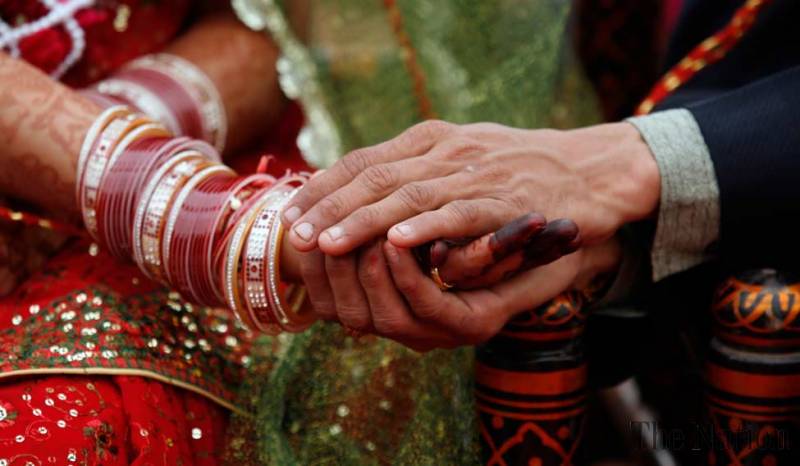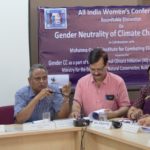In a landmark judgement on 23rd May 2018, a woman in England has been convicted of forcing her 17-year old daughter into marriage with a man 16 years her senior. The British woman of Pakistani origin has been found guilty for not one, but two counts of forced marriage. Forced marriage occurs when either of the two parties don’t consent to marriage, and are under duress, family pressure, emotional torture, or experience physical and/or sexual abuse so as to agree to enter the marriage. It is a common perception that forced marriages are culturally embedded in the migrant community of UK, and thus certain communities, primarily the Pakistani, Bangladeshi, Indian and Somalian are labelled as forced marriage aficionados. However, women’s rights activists and academics have advocated for long and hard that abuse carried out under the garb of culture is still a violation of human rights, and is a form of violence against women. Oftentimes, even the police dodge investigation of such crimes committed within these communities, accounting for the ‘hidden’ nature of forced marriages, so that they are not labelled as culturally insensitive and racist.


Jasvinder Sanghera, founder of the charity Karma Nirvana, and a survivor of forced marriage herself, asserts that “no culture should accept the unacceptable” and urges victims to take the plunge in reporting forced marriages. Another reason why forced marriage is often labelled as a hidden practice among Asian communities is that victims give in to parental wishes rather than the marriage itself, and are against the idea of reporting it to the criminal authorities, because no child can bear to see his/her parents behind bars. Forced marriage has plagued Theresa May’s nation for more than a decade now, and the legal entity, Forced Marriage Unit, founded in 2005, a joint Foreign and Commonwealth Office and Home Office team – provided support to almost 1200 cases in 2017.
Criminalization of forced marriage came into effect in June 2014, but prosecutions were rare. Before the enforcement of the Forced Marriage Act, there were two sects- those in favour of criminalization , and those against it. According to the ‘yes’ camp, criminalization of forced marriages would increase conviction rates, while the ‘no’ camp demonstrated their concerns that this Act would further push the issue underground, and secondly, may potentially increase social ostracism faced by those who use this act.
The first prosecution occurred in Wales, a year after the legislation was introduced, where a man forced a woman into marrying her after raping her, and recorded illicit videos of her bathing without her consent. He later threatened the women that since he has raped her, no man would marry her now as she has ‘dishonoured’ the family code, and further put her into duress by threatening to leak her videos. This linkage of forced marriage with honour is a poignant reminder that women in the South Asian community are the ones who have to shoulder family repute which is governed by a woman’s social and sexual behaviour. The gendered nature of forced marriage can be significantly analyzed from the framework of honour. Furthermore, the honour narrative is so ingrained that often women consider suicide and other forms of self-harm rather than escaping or eloping from a forced marriage, as the latter will only bring ‘shame’ to her family.
Cut back to this recent conviction in Birmingham where the Pakistani-origin mum denied her daughter had been forced into marriage, whereas in fact, in 2012, when the daughter was just 13 years old, the mother arranged a marriage contract between the daughter and a man 29 years of age. This is the first count of forced marriage that she was prosecuted for, and the repercussion of this ‘marriage contract’ with negligible consent from the daughter was that this to-be-husband impregnated the 13-year old, who was a virgin till then. It can be speculated that that the victim was forced by the man to consummate the marriage, thus leading to rape. Forced marriage is thus rape which is legitimized by patriarchal traditions and initiated by families who play a leading role in committing this crime. The pregnancy was identified in the UK, and the mother arranged for an abortion immediately. In the court on Tuesday, the mother claimed that this extent was achieved because of “two teenagers who sneakily had sex”. Well, 29-year-old men are in no way teenagers. This is a compelling case which also unravels the mental health consequences of a forced marriage. A terminated pregnancy at the age of 13, the victim’s GP (General Practitioner) referred her to Child Services as she suffered from Post Traumatic Stress Disorder and acute depression. The cycle of abuse continued as she experienced child sexual exploitation and was raped again, and this again led to pregnancy. The second termination had severe psychological impacts, described by the girl’s GP, and she suffered from low self esteem, and craved for her mother’s attention. By this time, the mother started making frequent trips to Pakistan and took the daughter, now 17, to Pakistan as well in September 2016, on the pretence of a family holiday. Hours after her 18th birthday, the mother told her about the planned marriage with the same man who had raped her. It is important to note that the mother tried to construct the consent of her daughter by promising to buy her an iPhone. Even during the wedding ceremony, the daughter exclaimed to her mother several times that she didn’t want to marry that man, who is now absconding and suspected to be in Saudi Arabia. The victim’s activities were monitored and she had no point of communication, either virtual or direct, with anybody. The girl somehow managed to alert her friend through Facebook, who later reported the matter to FMU and British High Commission in Karachi, Pakistan. The mother, since the beginning, threatened her daughter to not reveal her ordeal to anyone, and if she did, she would ‘put ghosts in her’ who would ensure that her life is miserable. It is interesting to note that apart from the other forms of coercions such as emotional and physical abuse, black magic was used as a form of coercion in this case. Despite this, the victim came forward to testify against her mother and the statutory and voluntary organizations who raise awareness about forced marriages have commended this as a brave move.
Amid the quest to identify indicators of forced marriages, the abuse experienced by victims at the hands of people who are entrusted to ensure their safety, the UK legal reform system trying hard to be the ‘world leader in tackling forced marriages’, and most importantly, the consequences of a forced marriage on the victim, there is one major piece of the jigsaw puzzle which is missing- the community’s perception. It is important to involve the community in raising awareness about this issue, to understand their perception of ‘honour’ and ‘shame’ and whether they are changing or not, to gain their point of view on whether this Birmingham conviction is going to pave the way for victims to raise a voice, and families to seek free and full consent of their children. Nonetheless, calling this case a ‘landmark judgement’ is justified and one can only hope that it sends a strong message to people who use culture and religion as a cloak to facilitate forced marriages, and underestimate the capacity of consent.




